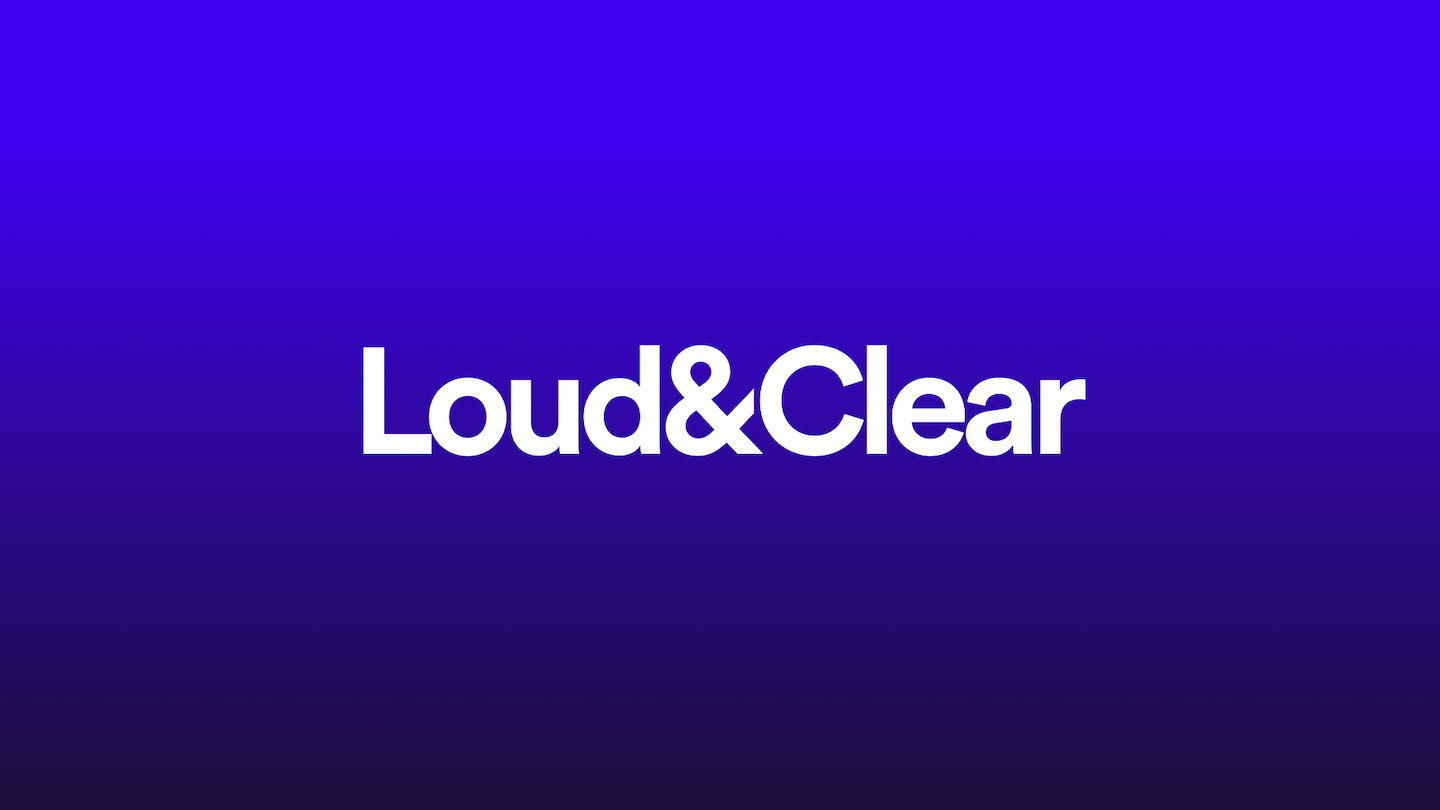
Spotify pense que les artistes méritent de la clarté en matière d’économie du streaming musical. C’est pourquoi la plateforme publie chaque année des données montrant son impact sur l’industrie. Ces informations se trouvent sur Loud & Clear, une ressource destinée aux artistes et aux professionnels de l’industrie, qui analyse l’économie mondiale du streaming, les acteurs et le processus.
Aujourd’hui, Spotify a dévoilé les données mises à jour sur Loud & Clear, y compris des chiffres de 2023 qui montrent de nouveaux progrès significatifs vers une industrie musicale plus diversifiée et plus équitable.
Dans une vue d’ensemble, le streaming a continué à créer plus d’espace pour que davantage d’artistes réussissent, démontrant un réel changement dans l’ensemble du secteur.
Les dernières données montrent que l’industrie n’a jamais été aussi peu dominée par les stars, avec plus de petits artistes ayant voix au chapitre et la possibilité de gagner de l’argent grâce à leur art. L’année dernière, Spotify a mis la barre très haute, enregistrant le versement annuel le plus élevé à l’industrie musicale de la part d’un seul distributeur. Et pour la toute première fois, le catalogue des artistes indépendants et des artistes signés chez des labels indépendants a représenté environ la moitié de ce que l’ensemble de l’industrie a généré sur Spotify en 2023.
Voici les points forts de notre rapport annuel sur l’économie de la musique.
Paiements record de Spotify
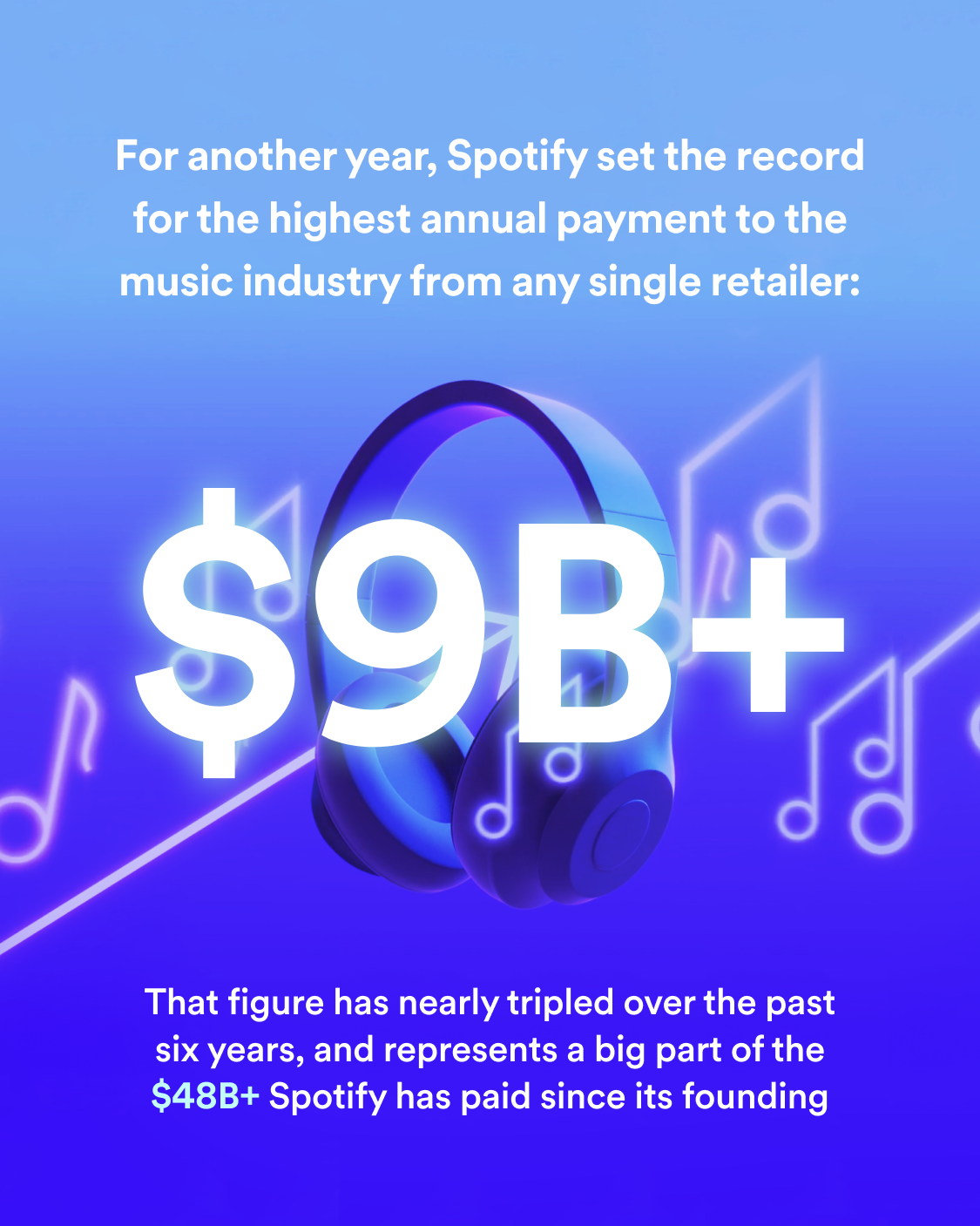
Ces versements ont permis aux ayants droit, agissant au nom des artistes et des compositeurs, d’enregistrer des revenus et une croissance record.
Plus d’argent à tous les niveaux
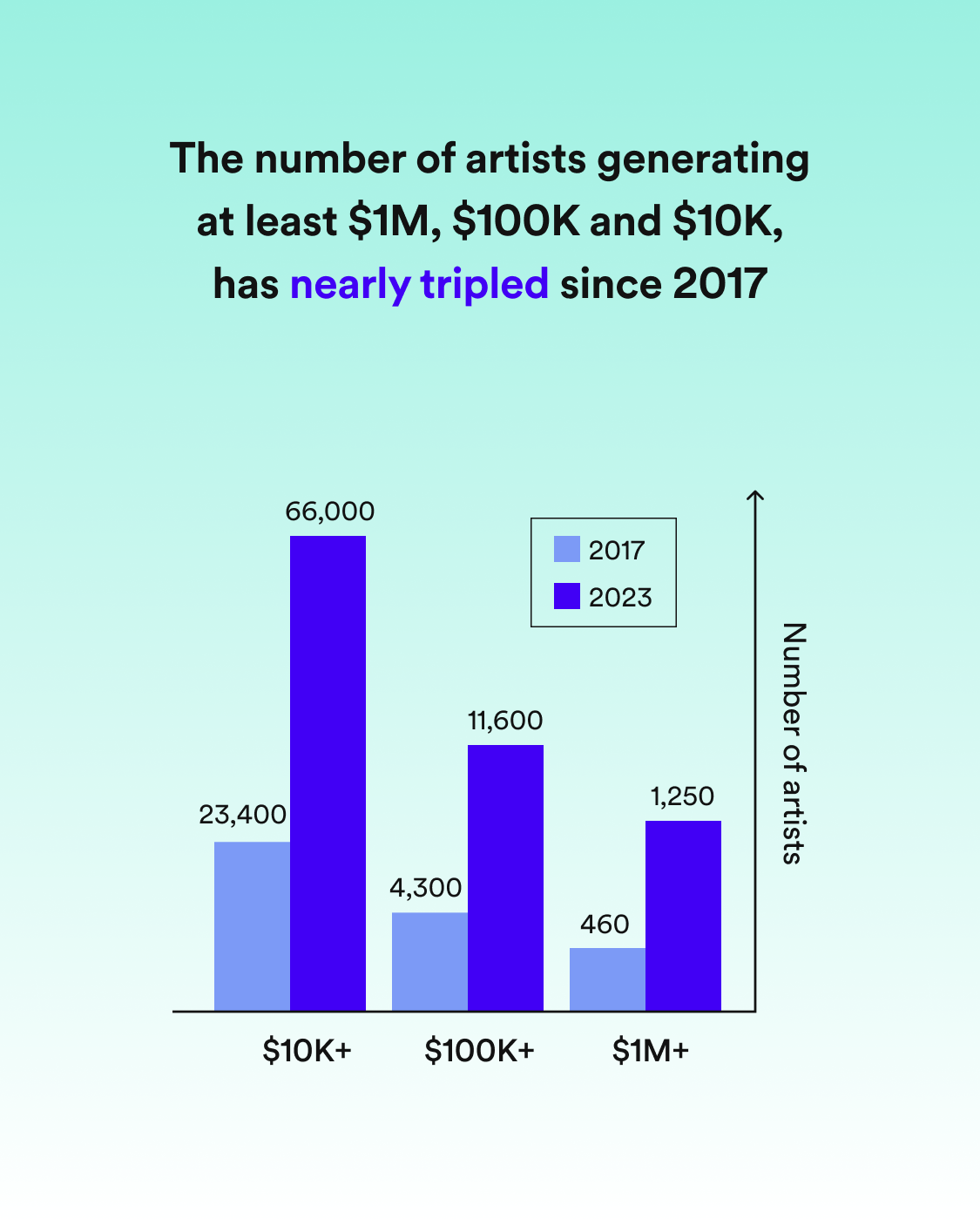
Les redevances Spotify contribuent au développement des artistes à tous les niveaux de leur carrière. En effet, les chiffres communiqués ne comptabilisent que les revenus générés par la plateforme. En réalité, les artistes peuvent potentiellement générer 4 fois plus de revenus grâce aux sources d’enregistrement musical en général, auxquels s’ajoutent les revenus des concerts et du merchandising.
Une année record pour les indépendants
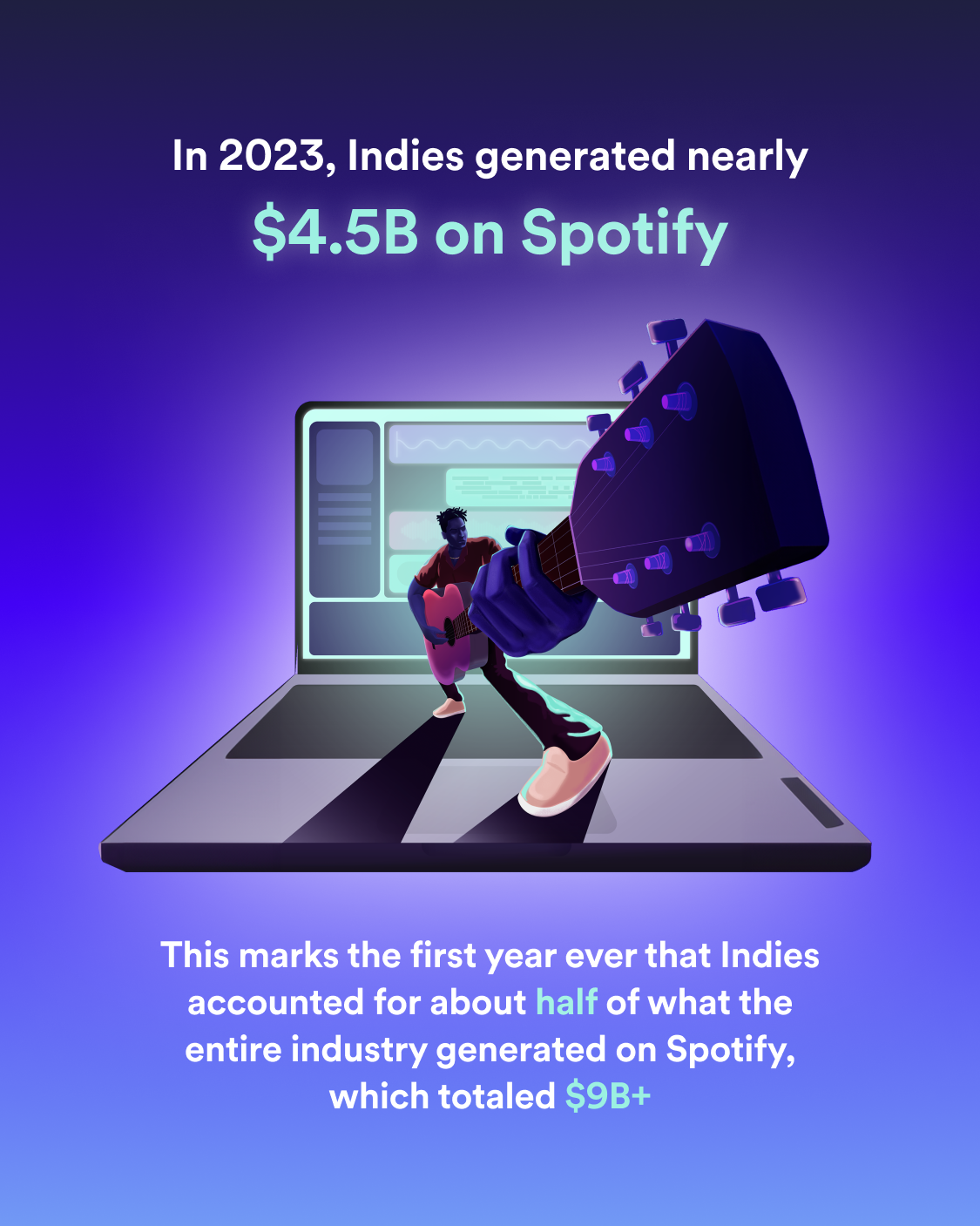
En fait, il s’agit du montant le plus élevé jamais généré par les indépendants auprès d’un seul distributeur en un an, ce qui représente une multiplication par 4 depuis 2017.
Les millionnaires inattendus
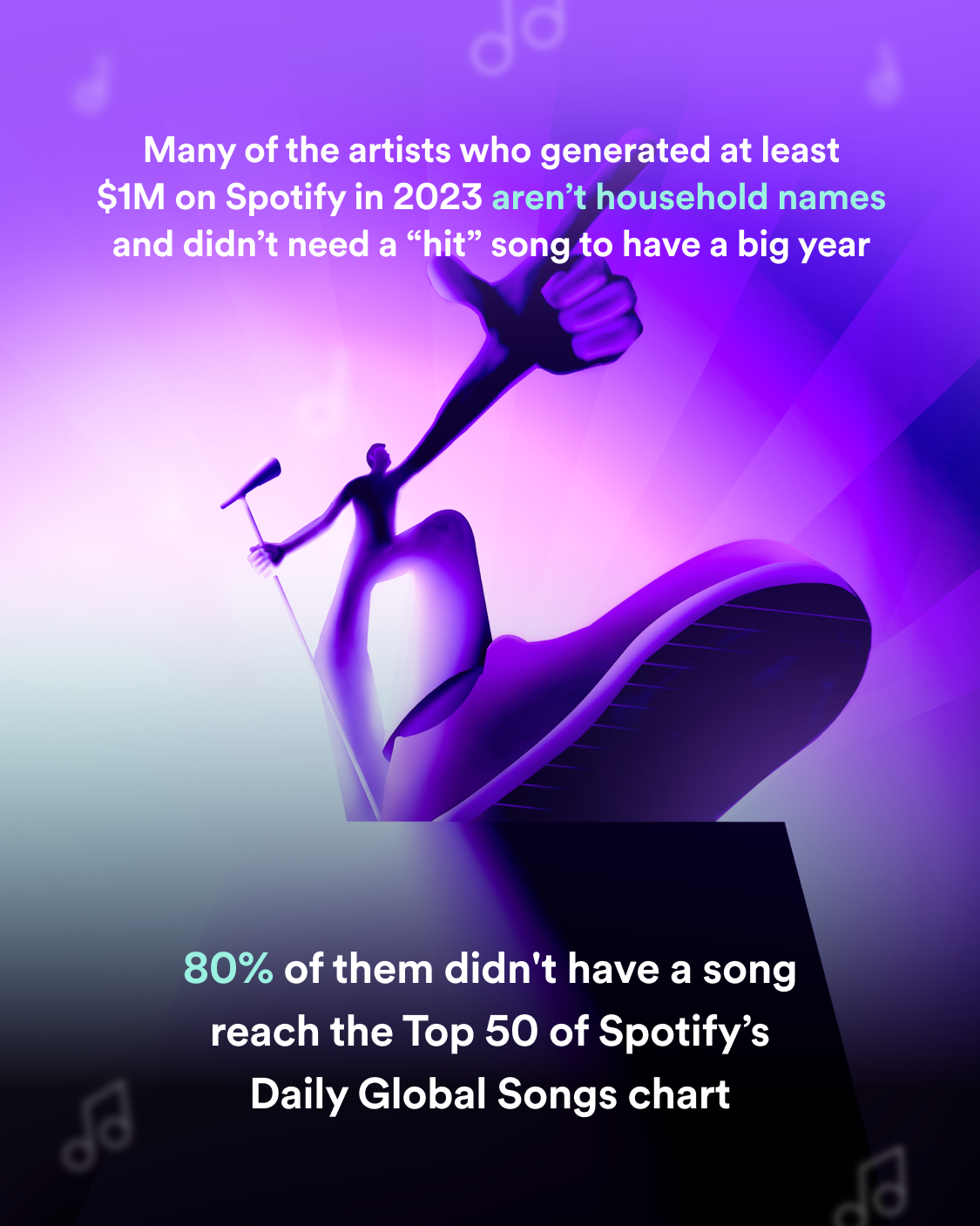
À l’ère du streaming, les classements ne sont plus assez représentatifs de tous les artistes qui connaissent le succès. La diversification grandissantes des goûts musicaux des utilisateurs, couplée à une augmentation des redevances a pour résultat un accroissement des revenus pour un panel d’artistes toujours plus varié.
La croissance de carrière des artistes
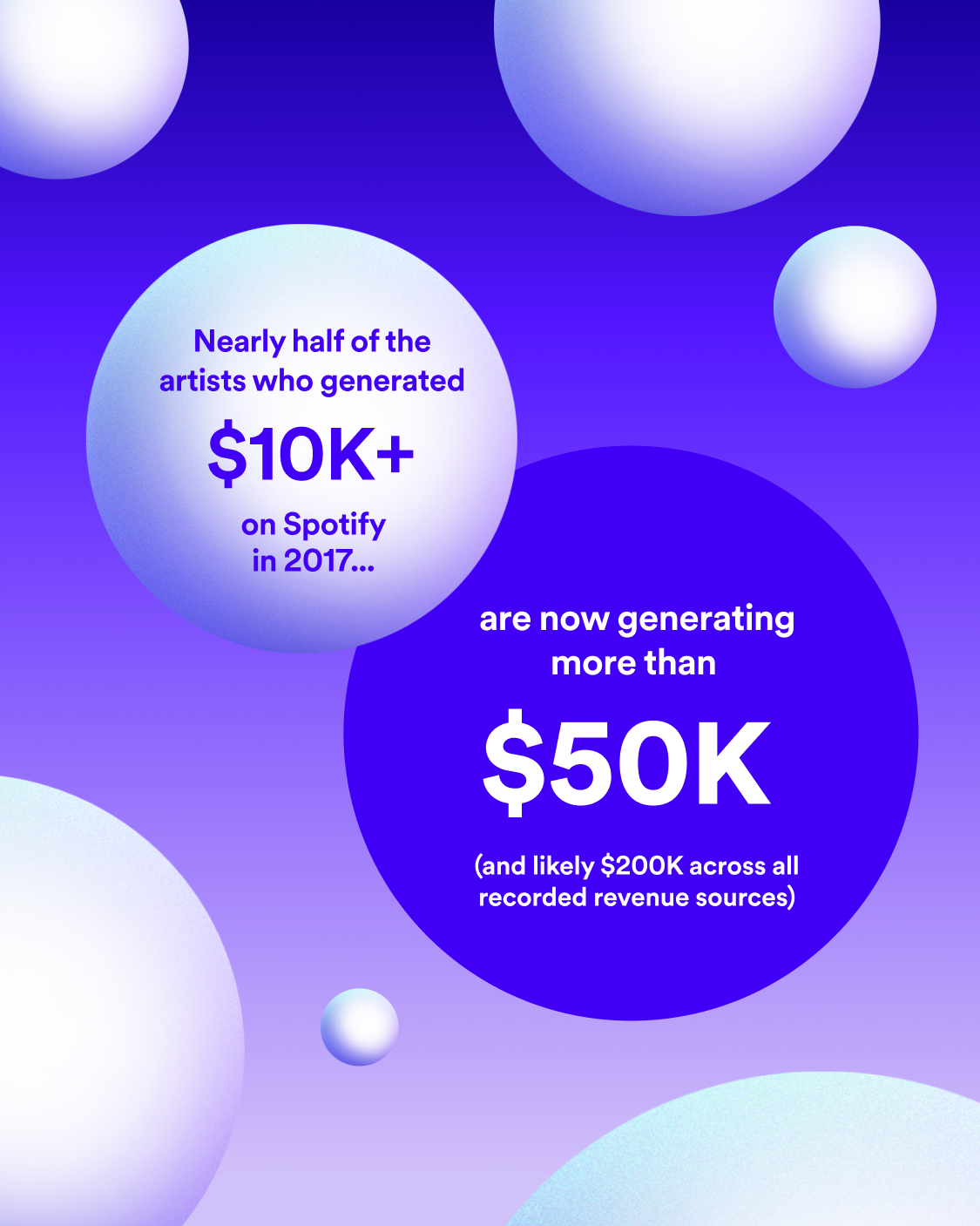
Les carrières des artistes ne font pas que commencer sur Spotify, elles grandissent sur Spotify. Nous restons engagés à aider les artistes émergents et professionnels à vivre durablement de leur travail, année après année.
Pour en savoir plus sur nos principaux résultats, ainsi que sur le contexte de l’industrie en général, des rapports supplémentaires et des FAQ, rendez-vous sur Loud & Clear.








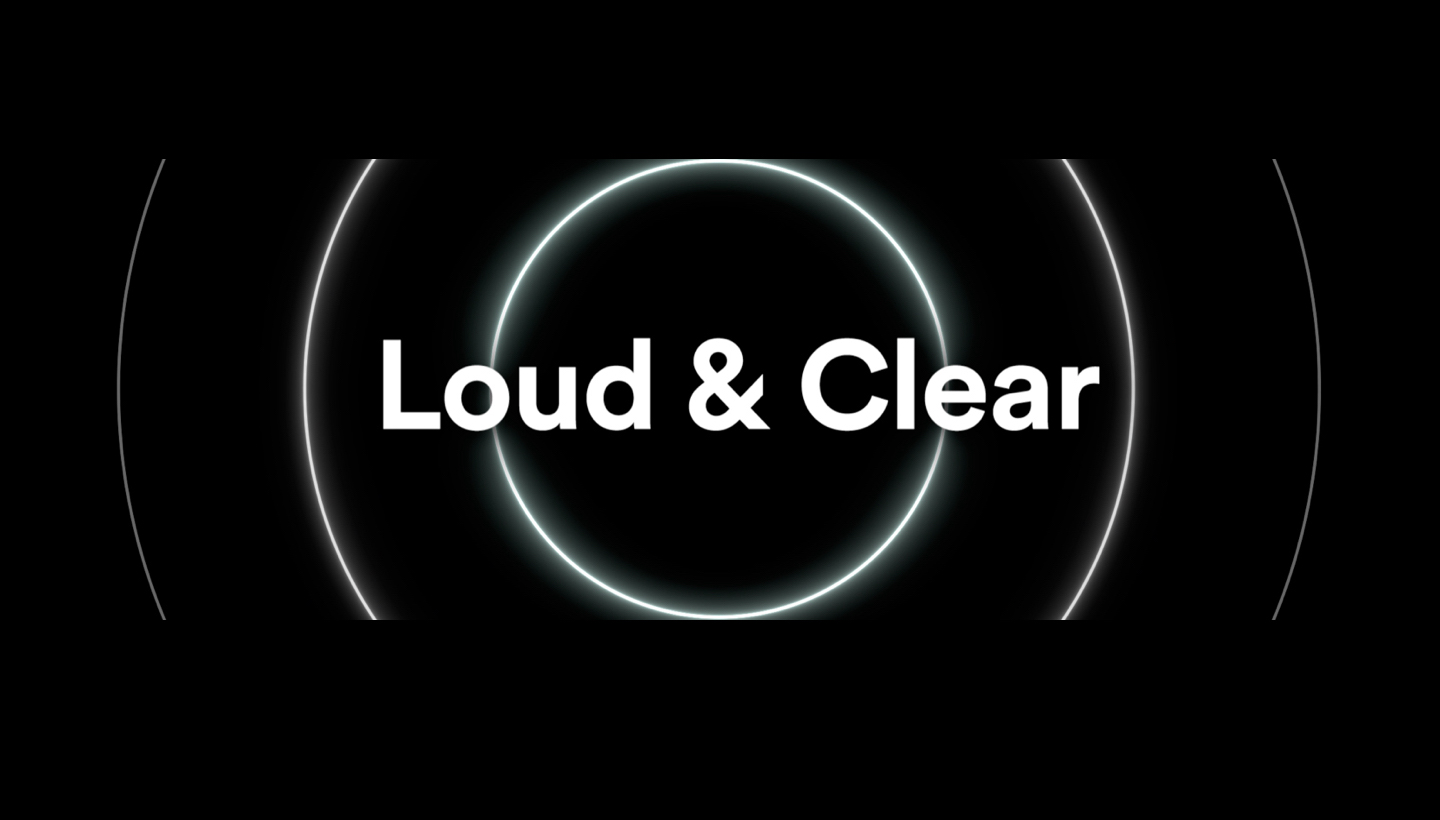
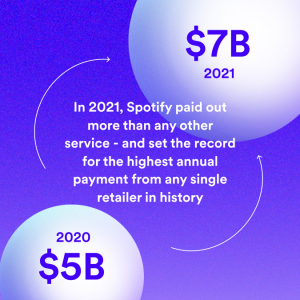
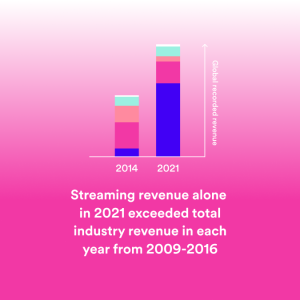
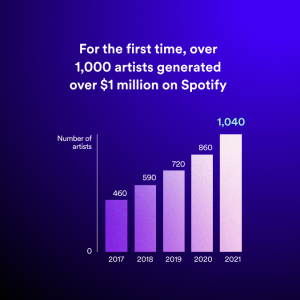
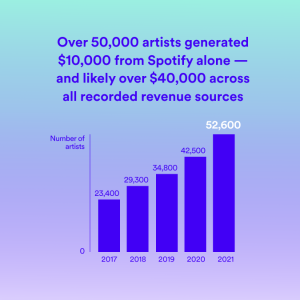
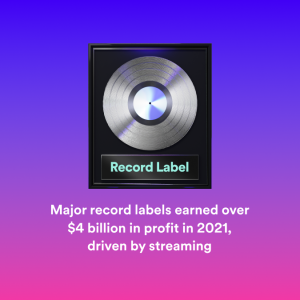
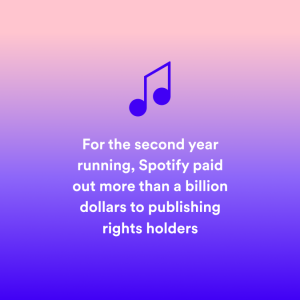
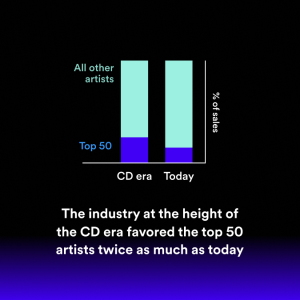
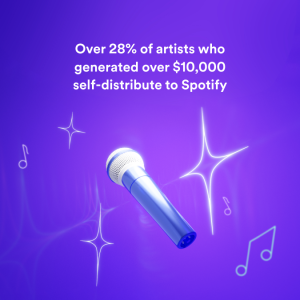
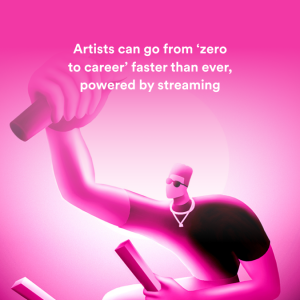
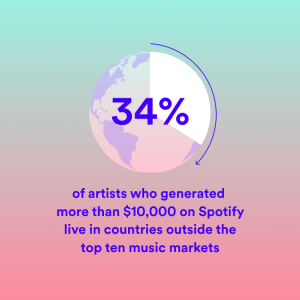
Recent Comments